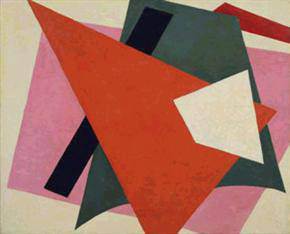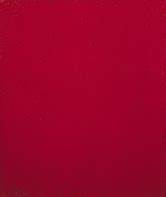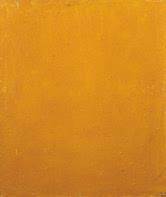
Liubov Popova: Painterly Architectonics

Aleksandr Rodchenko: Pure Red Colour

Aleksandr Rodchenko: Pure Yellow Colour
Rodchenko and Popova: Defining Constructivism at Tate Modern
Rodchenko and Popova: Defining Constructivism explores the work of Aleksandr Rodchenko (1891-1956) and Liubov Popova (1889-1924)from 1917 to 1925
]]>
Arguably two of the Russian avant-garde’s most influential and important artists, both were integral in the stylistic and theoretical underpinning of Russian Constructivism. They rejected the idea of ‘art for art’s sake’ in favour of art as a practicedirected towards social objectives.
The Russian Revolution of October 1917 was one of the greatest upheavals of the twentieth century. Its leaders envisioned a new society, thoroughly reshaped in accordance with their radical programme of social justice. Constructivism embraced this vision and sought to create new forms of art that would help to bring the new society into being. With the growth of industry, its practitioners were also influenced by, and used materials from, modern machinery and technology. Constructivists looked upon themselves as engineers and not necessarily artists: they believed they were the engineers of vision.
This exhibition documents the two artists’ promotion of multi-media practice. The display of Rodchenko’s and Popova’s utilitarian works demonstrates the degree to which both artists influenced twentieth century fashion, media, theatre, cinemaand graphic design.The show includes Rodchenko’s iconic oeuvre of posters for the cinema, ranging from the renowned Battleship Potemkin directed by Sergei Eisenstein in 1925 to the iconic One-Sixth Part of the World directed by Dziga Vertov in 1926.
Highlights include the two artists’ array of canvases produced between 1917 and 1921.Works from Popova’s series ofPainterly Architectonicsand Spatial-Force Constructionslead up to a roomdedicated to the 1921 exhibition entitled5x5=25 organised by Popova and Rodchenko with their colleagues Aleksandra Exter, Aleksandr Vesnin and Varvara Stepanova. This features Rodchenko’s famous group of monochromatic canvases,Pure Red Colour1921, Pure Yellow Colour 1921, Pure Blue Colour 1921.
Popova’s early death, in 1924, prevented her from entering the last phase of Constructivism. From 1925, the Constructivists’ preoccupation was photography and cine-camera documentation of street life. This exhibition demonstrates how Rodchenko used the camera to effectively portray new Soviet architecture, and to identify, through powerful portraits, the key players of the Constructivist movement.
Rodchenko and Popova: Defining Constructivism is curated by Russian-born American curator and scholar, Dr Margarita Tupitsyn, Tate Modern Director Vicente Todolí with Ben Borthwick, Assistant Curator, Tate Modern and Christina Kiaer, Consultant Curator and Associate Professor, NorthwesternUniversity. The exhibition will travel to Greek State Museum of Contemporary Art, Thessaloniki, 18 June – 20 September 2009 and Museo Nacional Centro de Arte Reina Sofia, Madrid, 19 October 2009 – 31 January 2010. A fully illustrated catalogue that demonstrates the interdisciplinary nature of Rodchenko and Popova’s work accompanies the show.
Follow us on:
